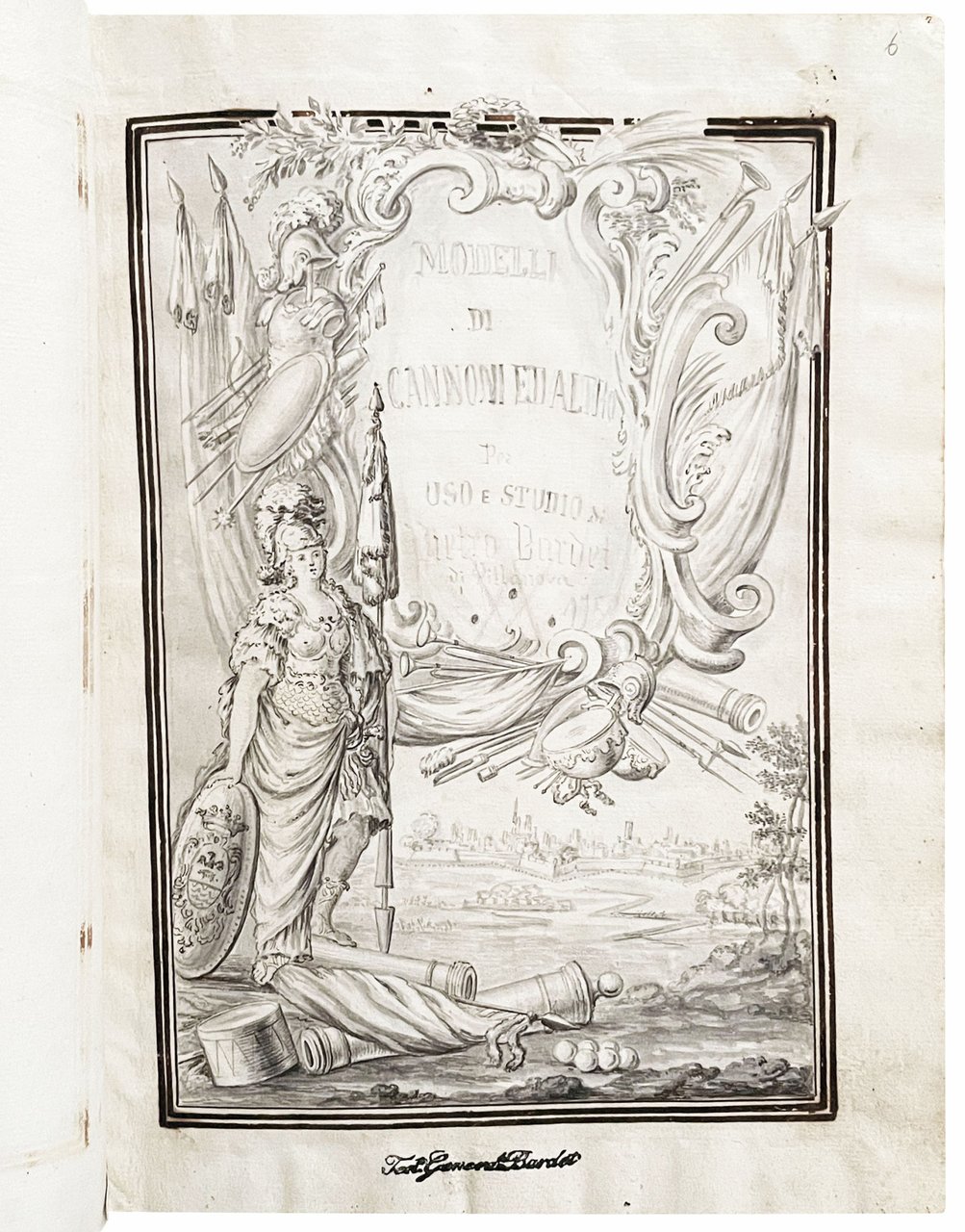
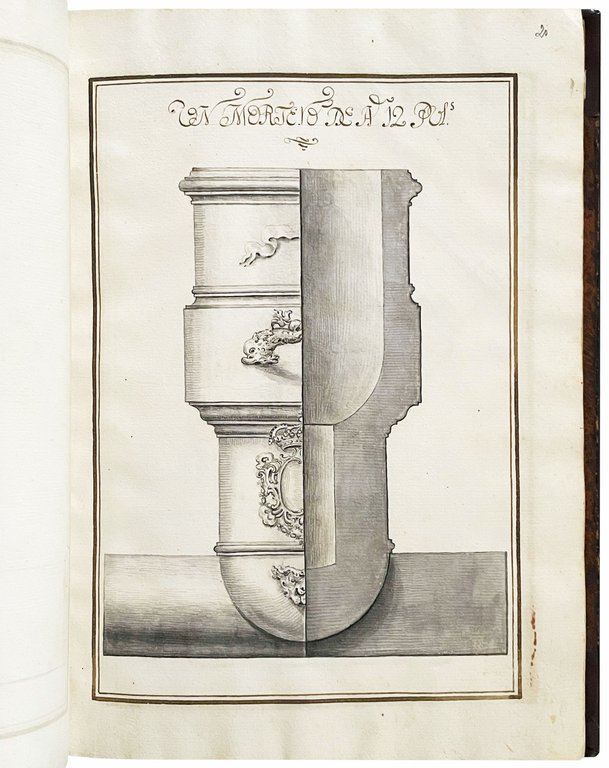
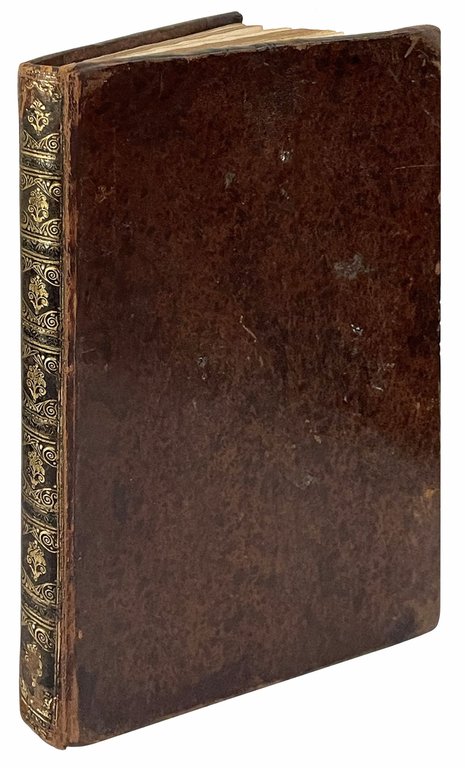
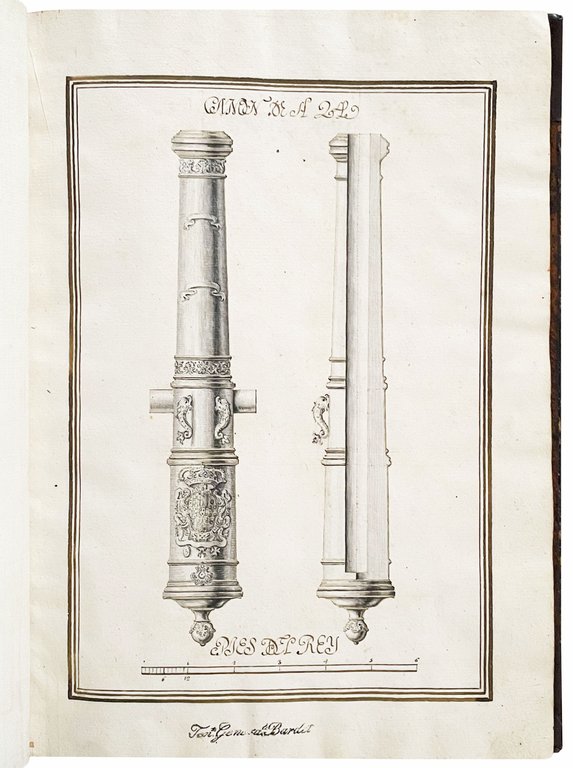
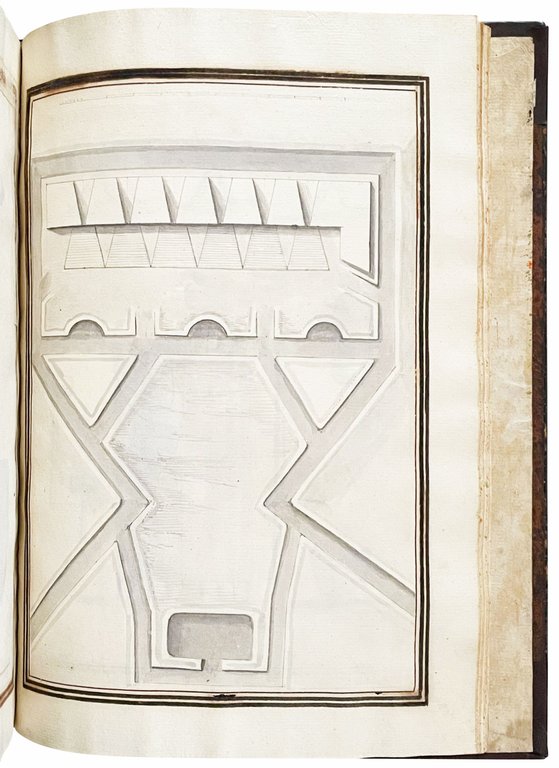
Livres anciens et modernes
BARDET DE VILLENEUVE, P.P.A. (b. 1680)
Modelli di cannoni ed altro per uso e studio di Pietro Bardet di Villanova 175[?]. Manuscript on paper
1750 ca.
3200,00 €
Govi Libreria Antiquaria
(Modena, Italie)
Les frais d'expédition corrects sont calculés une fois que l'adresse de livraison a été indiquée lors de la création de la commande. Un ou plusieurs modes de livraison sont disponibles à la discrétion du vendeur : standard, express, economy, in store pick-up.
Conditions d'expédition de la Librairie:
Pour les articles dont le prix est supérieur à 300 euros, il est possible de demander un plan de paiement échelonné à Maremagnum. Le paiement peut être effectué avec Carta del Docente, Carta della cultura giovani e del merito, Public Administration.
Les délais de livraison sont estimés en fonction du temps d'expédition de la librairie et de la livraison par le transporteur. En cas de retenue douanière, des retards de livraison peuvent survenir. Les frais de douane éventuels sont à la charge du destinataire.
Pour plus d'informationsMode de Paiement
- PayPal
- Carte bancaire
- Virement bancaire
-
-
Découvrez comment utiliser
votre Carta del Docente -
Découvrez comment utiliser
votre Carta della cultura giovani e del merito
Détails
Description
Pietro Bardet di Villanova is probably to be identified with P.P.A. Bardet de Villeneuve, a military engineer and author of a Cours de la science militaire in eleven parts printed between 1740 and 1757, and a “General Plan of the Excavations of Herculaneum” (1742). He began his military career fighting for Spain under the orders of the Marquis of Santa Cruz. When Charles III was made King of the Two Sicilies, Bardet de Villeneuve passed into his service with the title of ordinary engineer and innovated the king's military corps of engineers. From 1741 to 1745 he was director of works in the excavations of Pompeii and Herculaneum together with Rorro, replacing D'Alcubierre. His son Luigi Bardet di Villanova, also a military engineer at the service of the Bourbons between the 18th and the 19th centuries, worked primarily in the topographic field rising to the highest ranks of the military career (cf. M.G. Pezone, Un ingegnere del Genio borbonico tra Sette e Ottocento. Luigi Bardet di Villanova, in: “History of Engineering, Proceedings of the 3nd International Conference”, F.R. D'Ambrosio & S. D'Agostino, eds., Naples, 2018, pp. 235-247). The manscript may have belonged to him.

